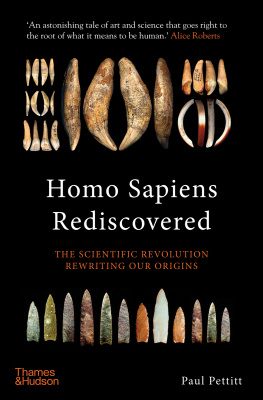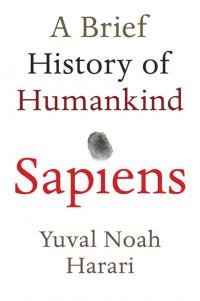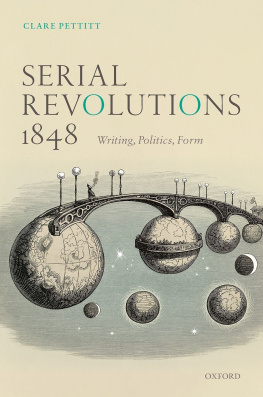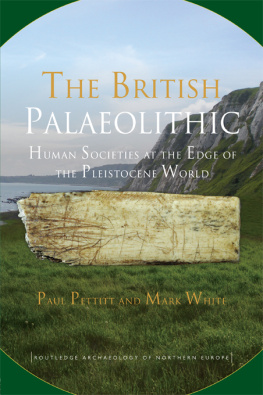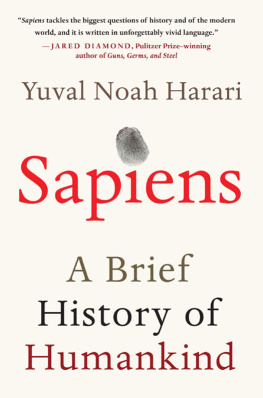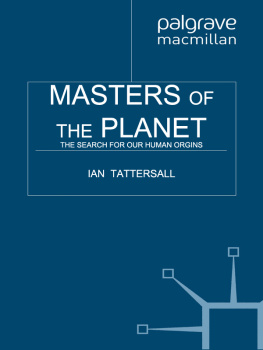



About the Author
Paul Pettitt is Professor of Palaeolithic Archaeology at Durham University, specializing in the European Middle and Upper Palaeolithic. He has conducted archaeological fieldwork in Spain, France, Italy, Moldova and the United Kingdom, and has been a team member in projects as far afield as Mexico and Borneo. He is the author of The Palaeolithic Origins of Human Burial.
Other titles of interest published by
Thames & Hudson include:
The Neanderthals Rediscovered: How a Scientific Revolution is Rewriting Their Story
Dimitra Papagianni and Michael A. Morse
The Dinosaurs Rediscovered: How a Scientific Revolution is Rewriting History
Michael J. Benton
Ancestral Journeys: The Peopling of Europe from the First Venturers to the Vikings
Jean Manco
The First Artists: In Search of the Worlds Oldest Art
Michel Lorblanchet and Paul Bahn
Be the first to know about our new releases, exclusive content and author events by visiting
www.thamesandhudson.com
www.thamesandhudsonusa.com
www.thamesandhudson.com.au
Contents
We had already been underground for five or six hours. Perhaps more. My sense of time always failed me in these places that were so far away from natural light. Those points of orientation we take for granted sunlight, distant noise held no sway here. My arms and legs ached, and a rumbling stomach reminded me that wed not eaten since a light breakfast. We had been standing still for much of the time, staring at the caves gritty wall, arms extended above our heads. There were six of us. We took it in turns to scrape the scalpel carefully over the glittering white surface, or to hold the test tube beneath it. Scrape, scrape, scrape. One of us would shine a torch at the spot on the wall on which all eyes were focused. One would take notes, another photograph or film. The shelly stalactite came off painfully slowly, a small accumulation of bright white powder no bigger than a pinch of salt built up at the bottom of the test tube. It was rock, after all. Scrape, scrape, scrape.
It was April 2016, and when we finally emerged into the light of day, and sat with the cold beers wed been looking forward to, we had no idea how our results were to radically change what we thought we knew about the origins of art and Ice Age culture.
The process that led us here had begun some thirteen years earlier. One evening at a college dinner in Oxford, a friend of mine, archaeology writer and Ice Age art specialist Paul Bahn, expressed how he would love to look for cave art in the UK, but wouldnt know where to look. I would, I replied. A few weeks later Id organized a four-day survey of the English and Welsh caves I thought were most likely to have any art if it was there. At Pauls request we were joined by Sergio Rippoll, an Ice Age art specialist from Madrids distance learning university. I certainly didnt expect to find any art. Its lucky Im not a gambler.
Our first stop was Creswell Crags, a narrow limestone gorge that straddles the counties of Nottinghamshire and Derbyshire in the English Midlands. Its several caves have long been known for their Ice Age archaeology; it seemed a sensible place to start our search.
Sergio is famous for his eyes, and he had before spotted Ice Age art in several Spanish caves. It was still an immense surprise when he called down excitedly from a ledge above our heads in a cave called Church Hole. He had found an engraving of a red deer, which could only be Ice Age in date. As news of the discovery spread, English Heritage paid for scaffolding in Church Hole, which allowed us to examine the higher parts of the caves walls where any additional surviving art would most likely be found. We discovered several more examples about a dozen in total, all engraved including the outline of a bison and extinct aurochs and enigmatic human-like images.
Thats when my colleague and old friend Alistair Pike came into the story. That art youve found in Church Hole, Alistair asked, any of it covered in stalactite? I answered enthusiastically: yes, Id spotted several areas where the white stone had formed over the engraved lines of the caves images. Our excitement was immediate. If that was the case, Alistair could use a special method called uranium-thorium dating to date stalactites that had formed over the art. If we ensured that we took our samples from the stalactite where it clearly overlaid the art, the results would provide a minimum age for the underlying engraving, or in other words a date that the art must have been created before. We were soon back in Church Hole, and busy with a drill. Back then its not that long ago but science moves quickly we needed a relatively large sample, a circle of the stalactite roughly 3 cm (1 in.) across. When Alistairs results came through a month or so later, they showed that the stalactite had formed towards the end of the Ice Age, about 13,000 years ago. The art underneath must have been older.
Several years passed. Alistair and I began directing archaeological excavations at Creswell Crags in order to understand more of the behaviour of the Ice Age artists who had left their indelible marks on Church Holes walls. There was a lot of cave art out there in France and Spain too. Thats how we came to spend so much time underground in three Spanish caves, painstakingly scraping stalactite off dozens of examples of Ice Age art. Our main intention was to refine what we knew about how the art had evolved, and how it changed in theme and style over the course of the last 25,000 years of the Ice Age. But things would turn out differently. Much of the art we dated fell within the expected range, from a couple of thousand back to over 25,000 years ago. But some of the results inspired Alistair to telephone me at home one late evening. Several samples from all three of the caves wed examined had come out surprisingly old. Much older than wed expected.
The results showed that the stalactites overlying art in La Pasiega Cave in the north of the country, Maltravieso Cave in the centre, and Ardales in the south, had formed around 65,000 years ago. In all cases the art had to be more than 65,000 years old. The implications were profound: this doubled the age of Ice Age art overnight. But, far more importantly, it showed that the art could not have been made by Homo sapiens. We have a good understanding of when members of our own species first arrived in Europe during the Ice Age; in Spain as elsewhere, this occurred around 42,000 years ago. Even if the art wed dated turned out to be 65,000 years old and not much older, it would have been created 23,000 years before Homo sapiens first arrived in Spain. It had to be the creation of another type of human, and in all probability it was made by the Neanderthals.
Thinking this through raised more questions. Were the Neanderthals the first to produce art? If so, we were wrong in thinking that it was unique to Homo sapiens. Was their art different? The examples wed dated were all non-figurative: marks made by covering parts of the body with pigment and using them to colour the walls. Perhaps our
Next page
